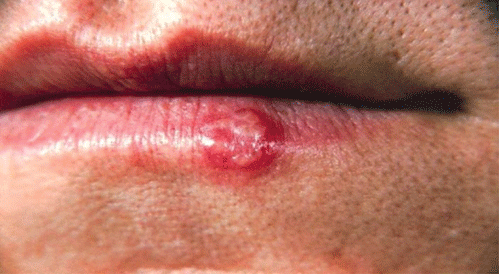Pathophysiology

Infection occurs in a susceptible host after virus penetrates abraded skin or mucosal surfaces. After minimal replication at the site of inoculation, the virus travels along the innervating axons to reach the sensory ganglion, where viral replication takes place. Visible lesions result when the virus subsequently returns to the inoculation site via the peripheral sensory nerve, replicates, and causes cell lysis. Lifelong latency and periodic recurrences is a hallmark of herpes simplex virus infection. Some of the stimuli that can precipitate reactivations include exposure to ultraviolet light, stress, hormonal changes, immunosuppression, and intercurrent infection. Histology of skin lesions shows balloon degeneration of infected cells, condensation of nuclear chromatin, and formation of multinucleated giant cells.
Disseminated infection occurs when the host is unable to control viral replication leading to viremia and multiorgan involvement. It is usually seen in neonates and immunocompromised individuals (and very rarely in immunocompetent hosts). Specific immunologic factors responsible for immunity to herpes simplex virus are not completely understood. Both antibody and cell-mediated immunity influence the severity and frequency of recurrences. Herpes simplex virus is also believed to suppress innate immunity by suppressing the production of interferon-alfa and interferon-beta. Additionally, titers of antibodies that mediate antibody-dependent cellular cytotoxicity inversely correlate with severity of neonatal infection.
